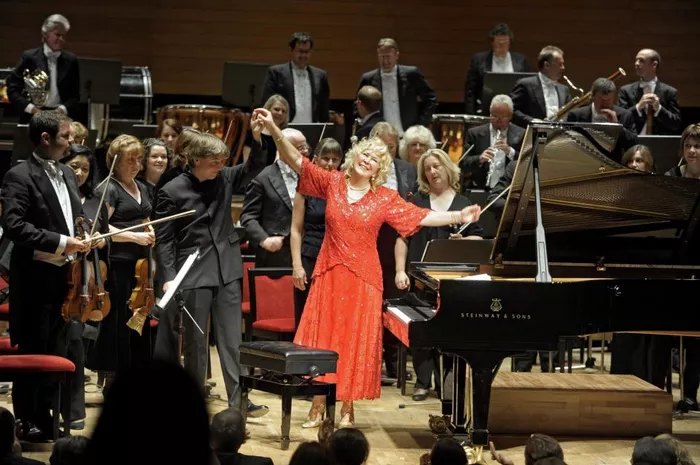Classical music is often associated with elegance, sophistication, and timeless beauty. Yet, beneath this serene surface lies a realm of astonishing speed and virtuosity. Some pieces demand lightning-fast fingers, incredible precision, and a relentless tempo that can leave both performers and listeners breathless. In this article, we will explore the fastest pieces in classical music, diving into their history, the composers behind them, and the technical challenges they present.
I. Understanding Tempo in Classical Music
Before we dive into specific pieces, it’s important to understand the concept of tempo in classical music. Tempo refers to the speed at which a piece of music is played. It is typically indicated by beats per minute (BPM) and can range from very slow (Largo) to extremely fast (Presto).
1. Common Tempo Markings
Largo: Very slow and broad (40-60 BPM)
Adagio: Slow and stately (66-76 BPM)
Andante: Walking pace (76-108 BPM)
Moderato: Moderate speed (108-120 BPM)
Allegro: Fast, quickly, and bright (120-168 BPM)
Presto: Very fast (168-200 BPM)
Prestissimo: Extremely fast (200+ BPM)
Fast tempos are often found in movements labeled Allegro, Presto, or Prestissimo, and they push the limits of human performance.
II. Baroque Brilliance: Vivaldi’s “Summer” Presto
Antonio Vivaldi, a master of the Baroque era, composed a series of violin concertos known as “The Four Seasons.” The third movement of “Summer,” marked Presto, is a dazzling display of speed and agility. This movement is designed to depict a summer storm, and its rapid tempo captures the ferocity and chaos of nature.
1. Technical Challenges
Finger Dexterity: Violinists must execute rapid scales and arpeggios with precision.
Bow Control: The speed requires impeccable bowing technique to maintain clarity.
Coordination: Synchronizing with the orchestra at such a fast tempo is demanding.
Vivaldi’s “Summer” Presto remains a popular showpiece for violinists, showcasing their technical prowess and stamina.
III. Classical Precision: Mozart’s “Rondo alla Turca”
Wolfgang Amadeus Mozart’s “Rondo alla Turca” is the final movement of his Piano Sonata No. 11 in A major, K. 331. This piece, often played at a brisk tempo, imitates the sound of Turkish Janissary bands, known for their lively and rhythmic music.
1. Technical Challenges
Finger Agility: Pianists must navigate rapid passages with both hands.
Articulation: Clear and crisp notes are essential at high speeds.
Dynamic Control: Maintaining musicality while playing fast is crucial.
“Rondo alla Turca” is a staple in the piano repertoire, beloved for its energetic and joyful character.
IV. Romantic Virtuosity: Liszt’s “La Campanella”
Franz Liszt, a towering figure of the Romantic era, was renowned for his virtuosic piano compositions. “La Campanella,” part of his Grandes Études de Paganini, is based on a theme by Niccolò Paganini. This etude is notorious for its speed and technical demands.
1. Technical Challenges
Hand Stretches: Large leaps and stretches test the limits of hand flexibility.
Rapid Repetition: Fast, repeated notes require endurance and precision.
Finger Independence: Complex passages necessitate control of each finger.
“La Campanella” remains a benchmark for pianists, symbolizing the pinnacle of Romantic virtuosity.
V. Modern Marvel: John Adams’ “Short Ride in a Fast Machine”
John Adams, a contemporary American composer, created “Short Ride in a Fast Machine” in 1986. This orchestral piece is known for its relentless pace and rhythmic complexity. It captures the exhilarating experience of a fast car ride.
1. Technical Challenges
Rhythmic Precision: Musicians must maintain tight rhythmic control.
Coordination: The ensemble must stay perfectly synchronized.
Dynamic Contrast: Balancing loud and soft passages at high speed is essential.
“Short Ride in a Fast Machine” is a favorite in modern concert halls, thrilling audiences with its energy and drive.
VI. Challenging the Limits: Flight of the Bumblebee
No discussion of fast classical music is complete without mentioning Nikolai Rimsky-Korsakov’s “Flight of the Bumblebee.” Originally part of the opera “The Tale of Tsar Saltan,” this piece is famous for its blistering tempo and relentless motion.
1. Technical Challenges
Speed: The rapid tempo pushes performers to their limits.
Endurance: Sustaining the tempo for the entire piece is demanding.
Precision: Every note must be clear and articulate, even at high speeds.
“Flight of the Bumblebee” has been adapted for various instruments, each version challenging musicians in unique ways.
VII. Virtuosity Unleashed: Paganini’s Caprice No. 24
Niccolò Paganini, a legendary violinist, composed 24 Caprices for Solo Violin, with Caprice No. 24 being the most famous. This piece is renowned for its technical difficulty and fast tempo.
1. Technical Challenges
Double Stops: Playing two notes simultaneously at high speed is challenging.
Pizzicato: Plucking strings rapidly requires precision and speed.
Bowing Technique: Fast, varied bowing techniques test a violinist’s skill.
Caprice No. 24 remains a rite of passage for violinists, symbolizing ultimate virtuosity.
See Also:6 Classical Music Pieces Inspired by Swans: All You Want to Know
VIII. Conclusion
Fast classical music showcases the extraordinary skills of musicians and the creative genius of composers. Pieces like Vivaldi’s “Summer” Presto, Mozart’s “Rondo alla Turca,” Liszt’s “La Campanella,” Adams’ “Short Ride in a Fast Machine,” Rimsky-Korsakov’s “Flight of the Bumblebee,” and Paganini’s Caprice No. 24 push the boundaries of what is possible on their respective instruments.
These compositions not only demand technical excellence but also bring an exhilarating energy to the concert hall. They remind us that classical music is not just about serene melodies and slow movements; it can also be a thrilling ride at breakneck speeds. Whether you’re a musician tackling these pieces or a listener marveling at their execution, the fastest classical music offers an unforgettable experience that continues to captivate audiences around the world.

